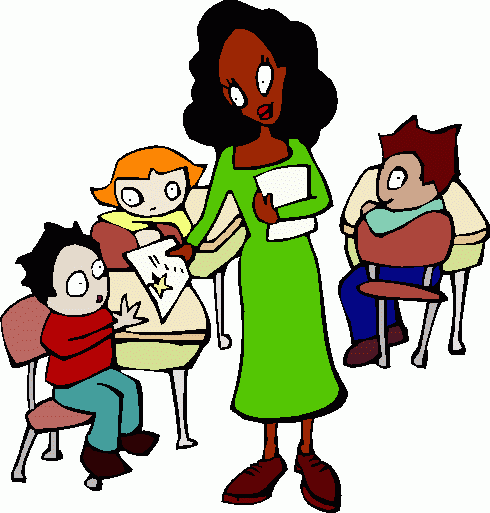THIRD GRADE > 3.OA.7 > TEACHER GUIDE
TEACHER GUIDE TO CLARIFICATION
3.OA.7
Multiply and Divide within 100
3.OA.7 Fluently multiply and divide within 100, using strategies such as the relationship between multiplication and division (e.g., knowing that 8 x 5 = 40, one knows 40 5 = 8) or properties of operations. By the end of Grade 3, know from memory all products of two one-digit numbers.
Fluently multiply and divide within 100
Students need to practice multiplication, this goes beyond just memorizing their facts. Students need a strategy in order to multiply numbers quickly. Daily Discourses that help to demonstrate the way students think about solving multiplication will help students become fluent and to see the relationship between multiplication and division.
For example, the multiplication fact 4 X 7 could be difficult for students to remember. A strategy they could use in order to get the answer would be to decompose and establish the foundation for distributive property.
4 x 7=28
Student 1 says: “I know that 4 can be split into 2 and 2. I know 7 x 2 = 14 so I can add 14 + 14 to get 28.”
Student 2 says: “I know that 7 can be split into 5 and 2. I know 4 x 5 = 20, now I just need to add 2 more 4’s to get
20 + 8 = 28.”
Properties of Operations and Drawings
To develop an understanding of the distributive property, students need to decompose the whole into groups. Arrays can be used to develop this understanding. To find the product of 3 × 9, students can decompose 9 into the sum of 4 and 5 and find 3 × (4 + 5).

Create easier known products:
A teacher may ask students to solve 3 x 4=12 Students could then show how they think about 3 x 4 in order to get 12.
Next the teacher may ask students to solve 3 x 5=15 students can show the various ways in which they think about 3 x 5 to get 15.
Finally, the teacher can ask students to solve 3 x 9. The teacher may point out that they could use the information on the board in order to solve 3 x 9. Hopefully, students could see that (3 x 4) + (3 x 5) is the same as 3 x 9. A way to prove this would be to draw a picture.
By practicing these kind of multiplication warm-ups students will have the tools and strategies to solve any multiplication problem that is one-digit by one-digit. In terms of fluency, students will have a strategy they can use that works for them in order to get an answer versus just memorization and then being stuck because they do not know the fact.
The Grade 3 Flipbook has a good definition of fluency and how it applies to 3rd graders and multiplication.
This standard uses the word fluently, which means accuracy, efficiency (using a reasonable amount of steps and time), and flexibility (using strategies such as the distributive property). “Know from memory” does not mean focusing only on timed tests and repetitive practice, but ample experiences working with manipulatives, pictures, arrays, word problems, and numbers to internalize the basic facts (up to 9 x 9). Multiplying and dividing fluently refers to knowledge of procedures, knowledge of when and how to use them appropriately, and skill in performing them flexibly, accurately, and efficiently.
Kansas Association of Teachers of Mathematics (KATM) Flipbooks.
Questions or to send feedback: melisa@ksu.edu. Retrieved from Math Flipbooks.
Other Strategies to attain fluency include:
• Multiplication by zeroes and ones
• Doubles (2s facts), Doubling twice (4s), Doubling three times (8s)
• Tens facts (relating to place value, 5 x 10 is 5 tens or 50)
• Five facts (half of tens)
• Skip counting (counting groups of __ and knowing how many groups have been counted)
• Square numbers (ex: 3 x 3)
• Nines (10 groups less one group, e.g., 9 x 3 is 10 groups of 3 minus one group of 3)
• Decomposing into known facts (6 x 7 is 6 x 6 plus one more group of 6)
• Turn-around facts (Commutative Property)
• Fact families (Ex: 6 x 4 = 24; 24 ÷ 6 = 4; 24 ÷ 4 = 6; 4 x 6 = 24)
• Missing factors
Refer to the 3.OA.7 Daily Discourse for opportunities to utilize these strategies
**Depending on the need of your students, developing this knowledge with concrete manipulatives (1- inch square tiles) and drawings might need to be utilized first. Students can make arrays and explore the different ways to decompose and compose the arrays. Then students can move to mentally solving these problems and fluently multiplying the groups of whole numbers.

Division
Once students have a strong foundation and can fluently multiply. Students will begin to see the relationship of multiplication and division. For example, if I have an array that has 24 units what are my possible rows and columns (factors).
Student 1
I know that 4 x 3 = 12 and that is half of 24 so 4 x 6 = 12
Student 2
I know that 3 x 3=9 and 3 x 3 = 9 so that is 18 of the 24 24 – 18 = 6
I need 6 more so 2 x 3 = 6
3 x (3 + 3 + 2) = 24
3 x 8 = 24
Students can also think of division as multiplication.
40 ÷ 8 = ?
I know 8 x 5 = 40 so 40 ÷ 8 = 5.
Coherence and Connections: Need to Know
Grade Below
Grade Level
Grade Above
2.OA.4
4.NBT.5
4.NBT.6
4.OA.4
4.MD.1
3.OA.4
3.OA.5
3.OA.6
3.OA.7
Evidence
Statement Key
Evidence Statement Text
Clarifications
MP
3.OA.7-1
Fluently multiply and divide within 25, using strategies such as the relationship between multiplication and division (e.g., knowing that , one knows that ) or properties of operations. By end of grade 3, know from memory all products of two one-digit numbers. 4416×= 1644÷=
i) Tasks do not have a context. ii) Only the answer is required (strategies, representations, etc. are not assessed here). iii) Tasks require fluent (fast and accurate) finding of products and related quotients. For example, each one-point task might require four or more computations, two or more multiplication and two or more division. However, tasks are not explicitly timed
-
3.OA.7
Fluently multiply and divide within 100, using strategies such as the relationship between multiplication and division (e.g., knowing that 8 x 5 = 40 , one knows 40 ÷ 5 = 8 ) or properties of operations. By the end of Grade 3, know from memory all products of two one-digit numbers.
ii) Only the answer is required (strategies, representations, etc., are not assessed here). iii) Tasks require fluent (fast and accurate) finding of products and related quotients. For example, each one-point task might require four or more computations, two or more multiplication and two or more division. iv) 75% of tasks are from the harder three quadrants of the times table (a x b where a>5 and/or b>5).
-
Illinois Assessment of Readiness Mathematics Evidence Tables
Retrieved from: https://www.isbe.net/Documents/IAR-Grade-3-Math-Evidence-State.pdf
In Grade 2, students work with arrays in standard 2.OA.4 – use addition to find the total number of objects arranged in rectangular arrays with up to 5 rows and up to 5 columns; write an equation to express the total as a sum of equal addends.
In Grade 4, students are expected to multiply a whole number of up to four digits by a one-digit whole number, and multiply two two-digit numbers, using strategies based on place value and properties of operations. Illustrate and explain the calculation by using equations, rectangular arrays, and/or area models.
The distributive property is the basis for the standard multiplication algorithm that students can use to fluently multiply multi-digit whole numbers in Grade 5.
Once students have an understanding of multiplication using efficient strategies, they should make the connection to division. Using various strategies to solve different contextual problems that use the same two one-digit whole numbers requiring multiplication allows for students to commit to memory all products of two one-digit numbers.
3.OA.7 Finding single-digit products and related quotients is a required fluency for grade 3. Reaching fluency will take much of the year for many students. These skills and the understandings that support them are crucial; students will rely on them for years to come as they learn to multiply and divide with multi-digit whole numbers and to add, subtract, multiply, and divide with fractions. After multiplication and division situations have been established, reasoning about patterns in products (e.g., products involving factors of 5 or 9) can help students remember particular products and quotients. Practice — and if necessary, extra support — should continue all year for those who need it to attain fluency.
PARCC Model Content Frameworks: Mathematics Grades 3-11 (version 5). (2017, November).
Retrieved from https://files.eric.ed.gov/fulltext/ED582070.pdf
This standard is extremely important to establish and master. The shift in instruction is to set up ample opportunities for students to practice these strategies throughout the year so they become fluent in multiplying and dividing.
Also check out Student Achievement Partners Coherence Map

Gone are the days of “doing” multiplication timed tests to earn a Sundae party.


This scoop is for your 3’s
Classroom Resources
Have Daily Discourse and use the 3.OA.7 Daily Discourse to practice multiplication strategies
HOT Questions
1. If I have 48 books how many shelves can I have with 6 books on each shelf?
Can you think of another way to arrange the books and shelves?
2. Tom has 7 boxes. Each box has 8 model cars in them. How many cars does Tom have? Explain how you know or draw a picture to describe your reasoning.
3. Nikki does not know what 6 x 8 is. Can you help her make two easier multiplication problems and then add the products together to find the answer to the expression 6 x 8.
4. Kelly does not know what 7 x 9 is. But she does know that 7 x 7 is 49. How can she use this information to help her figure out the expression 7 x 9
5. True or False - Explain how you know. If false, what will make it true?
8 x 2 x 3 = 4 x 4 x 3
6. True or False - Explain how you know. If false, what will make it true?
2 x 6 x 4 = 2 x 3 x 10
Additional Resources
Illustrative Mathematics
http://tasks.illustrativemathematics.org/content-standards/3/OA/C/7/tasks/2064
Achieve the Core
https://achievethecore.org/page/841/multiplication-and-division-fluency-set-of-tasks
IL Classrooms in Action - Formative Assessment
http://www.mathteachersinaction.org/formative-assessment-tasks.html
Howard County


